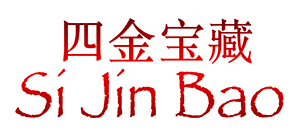Huangfu Mi: A Scholar and Physician
皇甫谧 Huangfu Mi: A Scholar and Physician
皇甫谧 Huangfu Mi was a scholar, physician, and master of Chinese Acupuncture and Moxibustion. Famous for his medical canon entitled 針灸甲乙經 Zhen Jiu Jia Yi Jing (Classics of Acupuncture and Moxibustion), Huangfu Mi lived through the late Eastern Han Dynasty, Three Kingdoms Period, and early Western Jin Dynasty. His classic is considered to be one of the earliest, oldest surviving, and most influential systematic materials on acupuncture and moxibustion to this day.
皇甫谧 Huangfu Mi's Origin Story
Born on a poor farm in Anding Chaona (now Lingtai in Gansu Province) in the year 215 A.D., 皇甫谧 Huangfu Mi was a descendant of the famous general Huangfu Song. As a young boy he was taught by the famous philosopher Xi Tan, and became a well-known scholar due to his broad and devoted studies. He was also known as a skilled and talented writer, editor, poet and historian.
At the age of forty 皇甫谧Huangfu Mi became gravely ill with wind-damp syndrome. The condition progressed into hemianesthesia or loss of sensation in his right leg and poor hearing. In an attempt to cure himself, he suffered serious drug poisoning followed by worsening of his symptoms.
While he was at his lowest, 皇甫谧 Huangfu Mi’s will to live took over and directed him to the Ancient Medical Classics. He experienced miraculous healing from the treatments, which triggered his curiosity about acupuncture and moxibustion. He dedicated himself to studying the classics and became a master in his field.
針灸甲乙經 Zhen Jiu Jia Yi Jing (Classics of Acupuncture and Moxibustion)
As 皇甫谧 Huangfu Mi studied the art and science of acupuncture and moxibustion using the medical classics, he observed that the information was at times confusing and too dispersed.
From 260-265 A.D., he organized and completed a comparative study of the classical texts 針經 Huangdi Zhenjing (Yellow Emperor’s Canon on Acupuncture), Suwen 素問 (Inner Book of the Yellow Emperor: Simple Questions) and 明堂孔穴針灸治要 Mingtang Kongxue Zhenjiu Zhiyao (Mingtang’s Essentials of Acupuncture Points). He arranged the information into 12 volumes, 128 chapters, and described 349 acupuncture points (300 bilateral, 49 single), all organized into zhenjiu (moxibustion) contraindications, meridians, acupuncture points, indications, methods of manipulation, and clinical experience. He also described the shape and making of needles. Titled 針灸甲乙經 Zhen Jiu Jia Yi Jing (Classics of Acupuncture and Moxibustion), it is noted as one of the most influential texts in the history of Chinese Medicine.
The earliest surviving specimen of Zhen Jiu Jia Yi Jing is a print by Wu Mianxue 吳勉學 in his collection Gujin Yitong Zhengmai Quanshu 古今醫統正脈全書 from the Ming period 明 (1368-1644). According to Min Li and Yongxuan Liang from the School of Basic Medical Science, Beijing University of Chinese Medicine, in Beijing,
"Wang Tao, a great physician of the Tang Dynasty said, “Physicians have to study his (Huangfu Mi's) precious book and observe his instructions.” During the Tang Dynasty, the Imperial Academy of Medical Sciences took his book as a compulsory textbook for the medical students. It was soon used as a textbook in Korea and Japan too."
Other publications written by Huangfu Mi include SanDuFuXu (Preface of the Praiseworthy Three Cities), Di Wang Shi Ji (Imperial Century),Gao Shi Zhuan (Biography of Great Scholars), Lie Nv Zhuan (Biography of Virtuous Women in Ancient China), Xuan Yan Chun Qiu (Spring and Autumn by Xuan Yan).
The Virtue of A Legend
Just like other legendary physicians of Ancient China, 皇甫谧 Huangfu Mi declined various honorary titles and multiple offers to serve the Royal court during his professional life.
“Only if you give up the pursuit for fame and wealth, you will do no damage to your life. Only when you give up the pursuit for riches and honor, you will cultivate great virtues.”
皇甫谧 Huangfu Mi Tweet
It is because of the passion for life, dedication to humanity, sense of responsibility, humility and courage possessed by giants like Huangfu Mi that we in the modern world are able to enjoy the incredible restorative power, efficacy, and unsurpassed value of Ancient, Classical, and Traditional Chinese Medicine.
Let’s not take it for granted!
